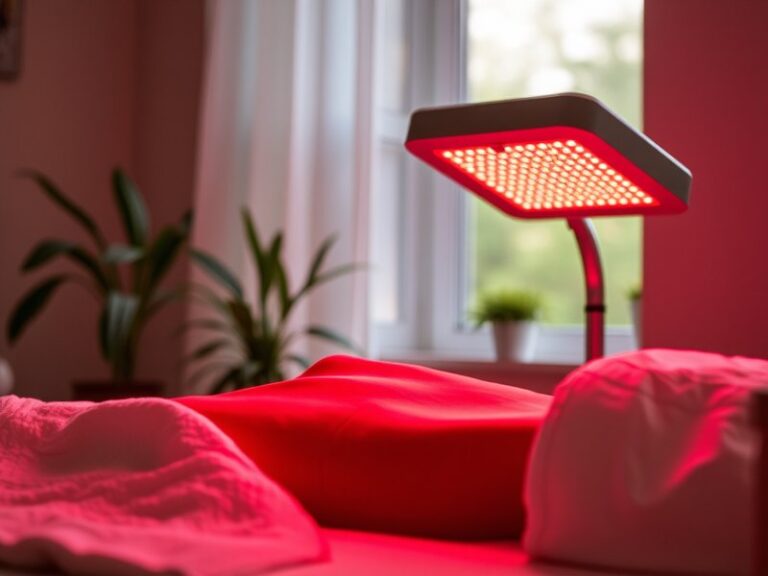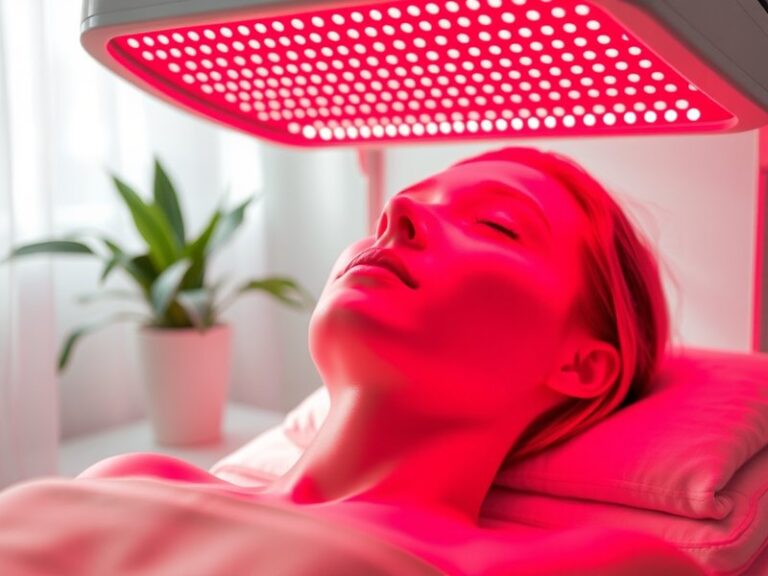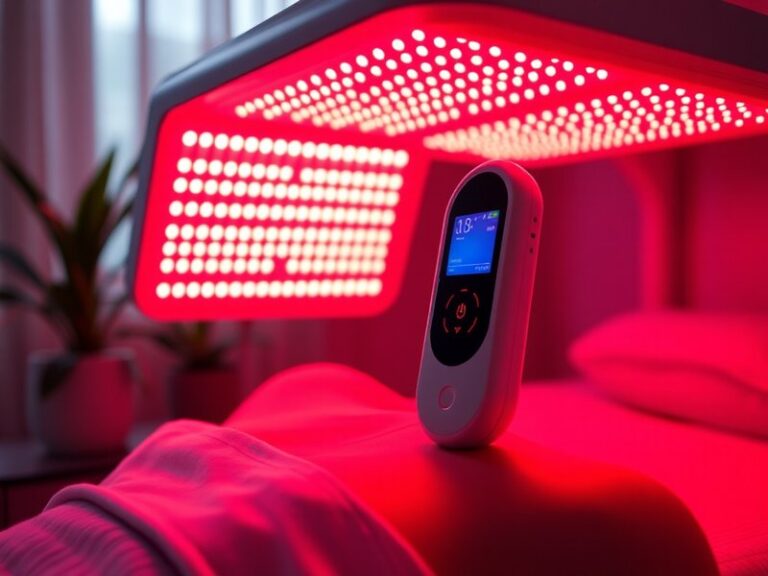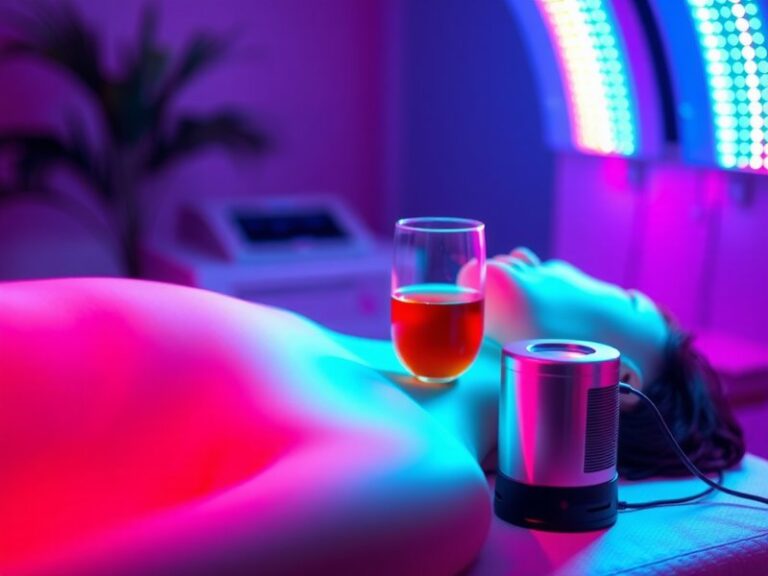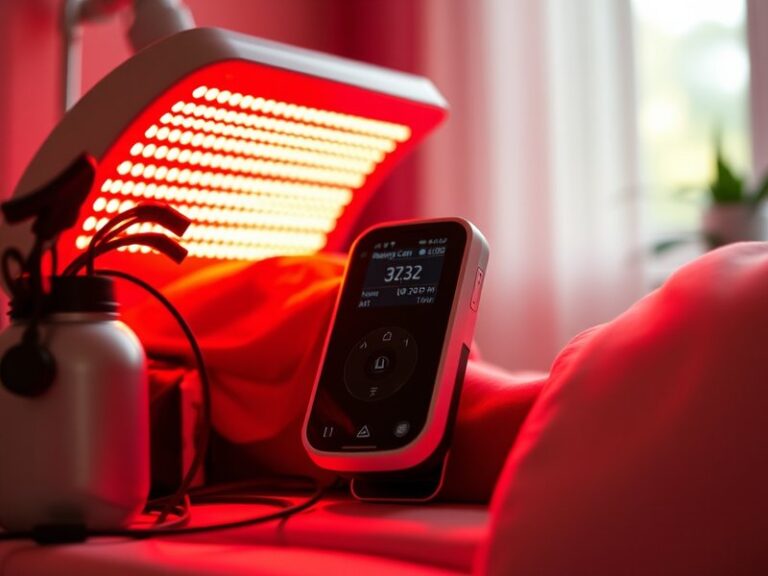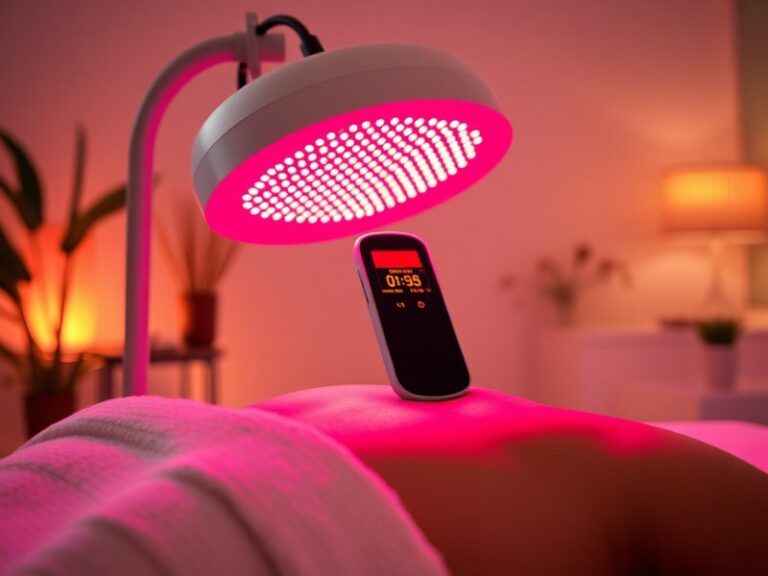What Is Red Light Therapy For The Face?
What Is Red Light Therapy For The Face?
Have you ever wondered if there’s a non-invasive way to enhance your skin’s appearance?
In this article, we will explore red light therapy, particularly its application for facial rejuvenation. We will cover what red light therapy entails, its potential benefits, considerations before use, alternatives, and frequently asked questions. By the end, you will understand whether this treatment is right for you.
Key Takeaways
- Red light therapy may help reduce signs of aging, improve skin tone, and enhance collagen production.
- The treatment is generally safe and non-invasive but should be carried out with proper precautions.
- Alternatives are available for skin rejuvenation that might suit different preferences or needs.
What is Red Light Therapy?
Red light therapy (RLT) involves the use of specific wavelengths of light, usually in the 600-650 nanometer range, to target skin issues. This therapy stimulates the body’s natural healing processes and can enhance cellular function. The light penetrates the skin and is absorbed by cells, helping to increase energy production, reduce inflammation, and promote healing.
RLT has been used in various medical applications, but its popularity in skincare has surged due to its benefits, particularly for the face. Many dermatologists and estheticians offer RLT treatments in clinics, and portable devices are also available for home use.
What are the Benefits of Red Light Therapy?
Red light therapy offers a myriad of advantages for those seeking to improve their skin. The following benefits highlight its effectiveness:
Find our take on Does Red Light Therapy Destroy Fat Cells?
Discover Reasons for Red Light Therapy Fatigue
Skin Rejuvenation
RLT is known for its regenerative properties, stimulating collagen and elastin production. Collagen is crucial for maintaining skin elasticity and firmness, making RLT a popular choice for those looking to reduce fine lines and wrinkles.
Reduced Inflammation
The therapy has anti-inflammatory effects, which can help soothe red and irritated skin. This makes it particularly beneficial for individuals with acne or rosacea, as it can help promote a clearer complexion.
Improved Skin Tone and Texture
Many users report a visible improvement in skin tone and texture following consistent RLT sessions. The therapy aids in reducing hyperpigmentation and promotes an even skin tone, enhancing overall appearance.
Enhanced Wound Healing
For those recovering from skin procedures such as chemical peels or laser therapy, RLT can aid in faster healing by promoting tissue repair. This helps reduce downtime and improves recovery outcomes.
Boosted Circulation
RLT prompts better blood flow to the skin, supplying essential nutrients and oxygen. Improved circulation can contribute to a healthy, radiant appearance.
Is it Possible to Use Red Light Therapy at Home?
Yes, it is possible and increasingly popular for individuals to use red light therapy at home. There are various handheld devices, masks, and panels designed for personal use, allowing convenience and flexibility.
What are the Advantages of At-Home Red Light Therapy?
Using RLT at home offers several benefits:
- Convenience: You can integrate RLT into your daily routine without the need for appointments or clinic visits.
- Cost-Effective: After the initial investment in a device, ongoing costs are lower compared to regular clinic sessions.
- Personal Control: You can customize the frequency and duration of treatments based on your skin’s needs.
What are the Disadvantages of At-Home Red Light Therapy?
While home devices are convenient, there are some disadvantages:
- Variable Results: Not all devices are created equal; lower-quality products may not deliver effective results.
- Less Guidance: Without professional supervision, it’s easy to misuse the device or overuse it, which can lead to undesirable effects such as skin irritation.
- Time Commitment: At-home therapy requires you to set aside time for each session, which might not fit everyone’s schedule.
What are the Things to Consider Before Using Red Light Therapy?
Before starting red light therapy, consider several important factors:
Skin Type
Understanding your skin type is crucial. Individuals with sensitive skin should consult with a dermatologist to determine the appropriateness of RLT.
Device Quality
If opting for at-home treatments, research and invest in high-quality devices from reputable brands to ensure efficacy and safety.
Frequency of Treatments
Determine how often you plan to use RLT. Many professionals recommend 2-3 sessions a week for optimal results, but individual needs may vary.
Pre-existing Skin Conditions
Consult a healthcare professional if you have any pre-existing skin conditions, as RLT may have contraindications for some conditions.
What are the Alternatives to Red Light Therapy?
If red light therapy does not appeal to you, several alternatives are available for skin rejuvenation:
Microdermabrasion
This procedure exfoliates the outer layer of dead skin cells, improving skin texture and promoting new cell growth. Microdermabrasion can help address uneven skin tone, fine lines, and acne scars.
Chemical Peels
Chemical peels use specific acidic solutions to remove the outer layer of skin, revealing fresher, smoother skin beneath. They can be tailored to treat particular concerns such as pigmentation issues or wrinkles.
Laser Resurfacing
Laser treatments target deeper layers of skin, stimulating collagen production and addressing more severe skin concerns. This option may require more recovery time but can yield significant results.
Microneedling
Microneedling involves tiny needles that create micro-injuries in the skin, prompting a healing response that boosts collagen and elastin production. It is effective for improving skin texture and reducing scars.
Conclusion: Is it Recommended to Try Red Light Therapy?
Based on the information presented, red light therapy appears to be a promising option for individuals seeking facial rejuvenation. It offers multiple benefits, primarily concerning skin health and appearance. However, it is essential to weigh the potential advantages and disadvantages, particularly if opting for at-home devices. Consulting with a dermatologist can help guide your decision on whether to incorporate RLT into your skincare routine.
Frequently Asked Questions
What types of skin conditions can red light therapy treat?
RLT can address various conditions such as acne, rosacea, fine lines, wrinkles, and even scarring. It is also beneficial for overall skin rejuvenation.
How long does a red light therapy session last?
Typically, a red light therapy session lasts between 10 to 20 minutes, depending on the device and specific treatment goals. Home devices may vary in recommended usage.
Are there any side effects of red light therapy?
Side effects are generally minimal but can include temporary redness, increased sensitivity, or irritation. These effects usually subside quickly.
How quickly can results be seen with red light therapy?
Many people notice improvements within a few weeks, but optimal results often accumulate over several sessions, typically within 4-6 weeks of consistent use.
Can red light therapy be combined with other treatments?
Yes, RLT can often complement other skincare treatments, such as chemical peels or microdermabrasion, but consulting a professional beforehand is advisable to avoid any adverse effects.

